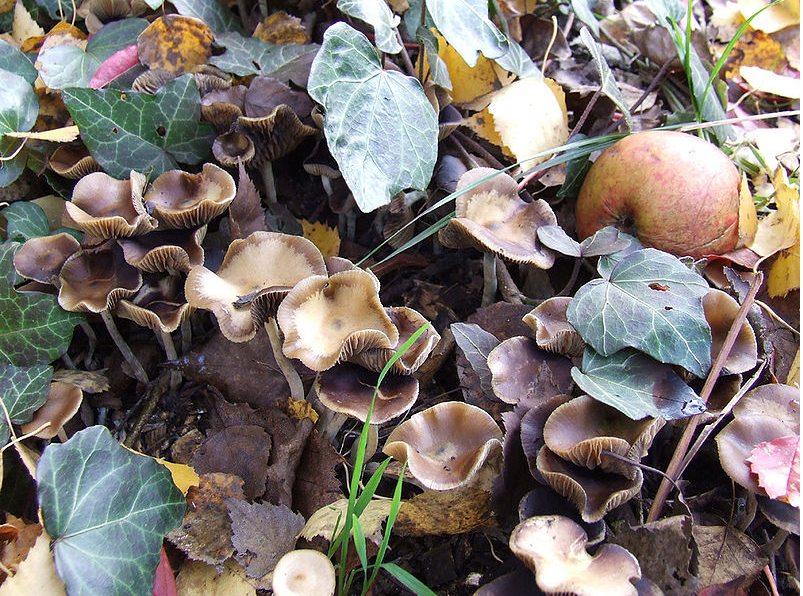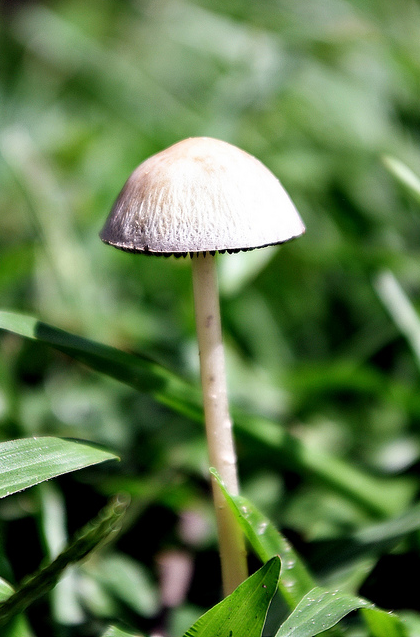Interactions
Organisms do not survive alone, therefore the relationships between P. cyanescens and other organisms will be discussed in greater depth on this page.
First it is important to understand the relationships that the Kingdom Fungi have with their surroundings. The habitat that fungus typically thrives in is normally the home to many other organisms too, therefore a battle ensues to compete for resources. Not all relationships between organisms are negative, in fact fungi serve to aid many other organisms, in particular plants through their symbiotic relationship involving the uptake of nutrients through the roots of the plants, and in turn the fungi provides the plant with essential minerals. It is common belief in the scientific community that plants and fungi would not be able to survive without their mutualistic relationship, in which both organisms reap some benefit from each other.
The various interactions that occur between most organisms can be described as a competition for resources, because one species will always benefit in a relationship, however not all relationships involve a "winner" and a "loser", as demonstrated in the relationship between plants and fungi. The values of relationships are very important from a scientific standpoint, as careful examination of the relationships between various organisms can provide causation for explaining phenomena in nature. This initiates a desire to explore the relationships between organisms to gain an increased comprehensive understanding of their symbiotic associations.

Wikimedia Commons, November 4, 2009
In regard to Psilocybe cyanescens, mutualism is a common occurrence in a relationship with plants. Mycelia would not be able to survive without the water supply that roots from plants can supply. Therefore it is important to note that fungi will thrive in areas with adequate nutrient and water supply. The nutrients that fungi desire will be of organic nature, such as fecal (manure) deposits which are high in organic composition, or woodland environments in which the root systems of plants can provide the required nutrients to promote the development of mycelia, as discussed previously in life cycle of fungi, and can permit large colonies of growth to occur in these habitats because of the surplus of nutrients. The mycelium will eventually decompose all of the available substrate, and in turn will have to eventually find a new location to grow. Therefore, the dispersal of spores becomes increasingly important in this situation, in order to stimulate growth in other areas through wind dispersal of spores to a new location that will support continued growth.
As mentioned earlier, the alkaline compounds in P. cyanescens

deter most predators, because of the effects of the compounds on the
nervous systems for these organisms can induce paralysis resulting
in death for these organisms. However, the relationship between
humans and this fungus is unique, because the alkaline compounds get
broken down in the human body complex, with a psychoactive compound
entering the brain which can provide a satisfying euphoric
hallucinogenic experience, which creates a demand for the fruiting
bodies of some mushrooms. Therefore, in this parasitic relationship,
(in which P. cyanescens is the "loser") humans are
essentially benefitting from this type of relationship. Symbiosis
occurs constantly, and we as humans are a
significant component in
the process!
Flickr Creative Commons, February 19, 2011
To see more amazing features check out the Fun Facts section of my website, which discusses even more interesting aspects of Psilocybe cyanescens! If you are confused on the interactions that fungi undergo, go back to the nutrition page in order to better understand the process of nutrient acquisition, which will aid in the understanding of symbiotic interactions.
